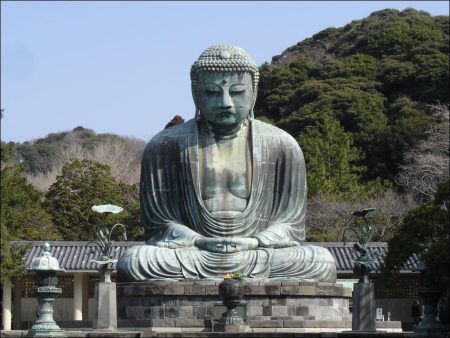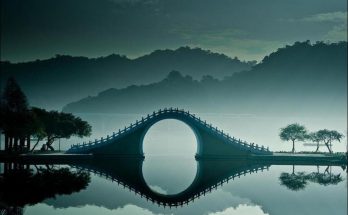You may rightly wonder why on earth such an absurdly huge thing was constructed at so remote a time as the 8th century. The motive at the back of it was religion, or rather superstition, if you like. Now, Buddhism was first introduced into Japan in 552. Though it encountered some opposition at first, it began to spread like wild-fire, especially after it became an established religion in 621, when all the aristocratic, or ruling, classes had succumbed to it, from the Mikado down.
About the same time the country was visited with a series of natural calamities, including a virulent pestilence which destroyed thousands of lives. This was attributed to the wrath of the Sun Goddess because of this wholesale worship of the new foreign god. It was to appease the Sun Goddess, therefore, that this great Buddha was cast, and installed as the chief idol of the great Tōdaiji Temple. So, it was in reality an image of the Goddess herself in an ingeniously Buddified form, called Roshana, or Birushana.
Thus the Daibutsu was only one of the many wondrous things created around the great Tōdaiji Temple, most of which, however, have been destroyed. The Daibutsu itself has passed through many vicissitudes, and many a tragic and romantic story has been woven around its colossal form. Yet it remains today almost exactly as it was when first cast, except the head, which, in a fire, fell off the shoulders and was subsequently replaced. This, together with the gigantic bell, 48 tons in weight, the 3rd greatest bell in Japan, cast in the 8th century, and other relics of the Nara period, tell tales of the grand scale on which the Tōdaiji was conceived and built.
The Daibutsu-den, or the hall in which the giant Buddha was housed, was of an ornate design and elaborate structure, quite different from its present makeshift of an ungainly structure, and the Daibutsu, covered with gold coating of which only a very faint trace is seen today, must have shone in the past with a glorious radiance quite dazzling the spectator.
Views: 148



